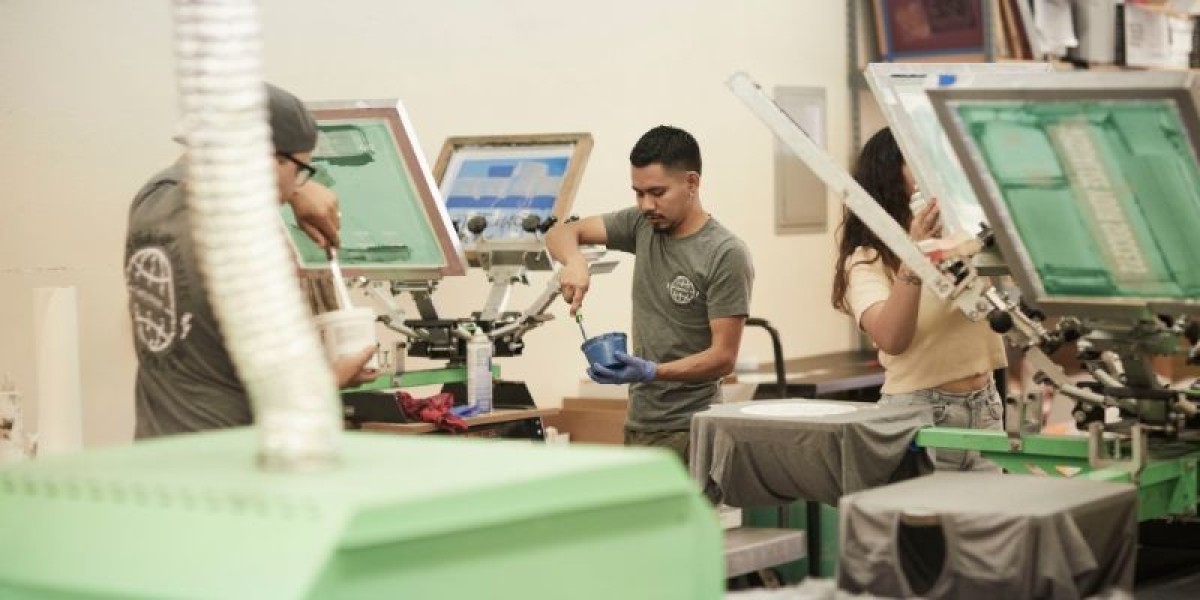Printing has always been an essential part of human communication, enabling the mass production of written material and images. Over time, various printing methods have been developed, each with its strengths and limitations. The need for more versatile and efficient printing solutions has paved the way for the emergence of DTF technology.
The Need for Innovation
Traditional printing methods, such as screen printing and heat transfer, have served us well, but they come with their constraints. These methods often lack the versatility needed to print on a wide range of materials, and the process can be time-consuming. As demand grows for more vibrant and accurate prints on diverse surfaces, the printing industry is turning to innovative solutions like DTF technology.
Enter DTF Technology
DTF, or Direct to Film, printing is a game-changer in the world of printing. Unlike traditional methods that involve multiple steps and materials, DTF simplifies the process by directly applying the design to a special film. This film is then transferred onto the desired surface, whether it's fabric, paper, or even wood. The result? Crisp, vibrant prints with unparalleled detail.
Working Mechanism of DTF
The DTF process is surprisingly straightforward yet highly effective. It starts with creating a digital design, which is then printed onto a special film using DTF printers. The film is carefully applied to the target surface, and heat is used to facilitate the transfer of the design. This method ensures precise color reproduction and intricate details, making it a preferred choice for various applications.
Benefits of DTF Technology
One of the standout advantages of DTF technology is the improvement in color vibrancy and accuracy. Traditional methods may struggle to capture the subtleties of a design, but DTF excels in bringing your vision to life. Additionally, DTF is versatile, allowing printing on materials like cotton, polyester, leather, and more. Businesses appreciate the cost-effectiveness and time efficiency of DTF, making it a practical choice for large-scale production.
Applications of DTF Printing
DTF technology finds its applications in diverse industries. In textile printing, DTF has revolutionized the creation of custom apparel, ensuring that designs are not only visually stunning but also durable. Beyond fashion, DTF is used in producing custom merchandise, adding a personal touch to everyday items. Artists and designers also embrace DTF for its ability to capture intricate details, making it a powerful tool in the world of art and design.
DTF vs. Other Printing Technologies
Comparing DTF with other printing technologies reveals its unique advantages. Unlike DTG printing, which is limited to fabrics, DTF can print on various materials, expanding its scope significantly. Screen printing and heat transfer, while reliable, may struggle with detailed designs, an area where DTF excels. Businesses and individuals looking for high-quality, versatile printing solutions often find DTF to be the ideal choice.
Challenges and Solutions
While DTF technology offers numerous benefits, it's not without its challenges. Common issues such as adhesion problems and color inconsistencies can arise. However, understanding these challenges and implementing effective solutions, such as proper pre-treatment of materials and calibration of equipment, can ensure a smooth printing process.
DTF Printing in the Fashion Industry
The fashion industry has been quick to embrace DTF printing, recognizing its potential to transform the design and production of clothing. Designers can now create intricate patterns and detailed graphics with ease, opening up new possibilities in fashion. Success stories from renowned fashion houses highlight the impact of DTF technology on the industry's creative landscape.
Environmental Considerations
As sustainability becomes a focal point across industries, DTF technology addresses environmental concerns in printing. The use of eco-friendly inks and the ability to print on a variety of materials contribute to reducing waste. Businesses looking to align with eco-conscious practices find DTF to be a responsible choice in printing technology.
Choosing the Right DTF Equipment
Investing in the right DTF equipment is crucial for achieving optimal results. Considerations such as print resolution, color management, and ease of use play a significant role. Brands like [Brand Name] and [Brand Name] are recognized for their quality DTF printers, providing businesses and individuals with reliable tools to bring their creative visions to life.
DIY DTF Printing: A Step-by-Step Guide
For those eager to explore DTF printing on their own, a step-by-step guide can make the process accessible. Gathering the right materials, selecting a suitable DTF printer, and following clear instructions can turn anyone into a DIY printing enthusiast. The freedom to experiment with designs and materials opens up a world of possibilities for creative individuals.
Future Trends in DTF Technology
The journey of DTF technology is far from over. Ongoing research and development promise exciting advancements in the coming years. From faster printing speeds to even higher color accuracy, the future of DTF holds great promise. Businesses and individuals alike can look forward to staying at the forefront of printing technology.
Customer Testimonials
Real-world experiences provide valuable insights into the effectiveness of DTF technology. Businesses that have adopted DTF printing share their success stories, emphasizing the positive impact on efficiency, creativity, and overall satisfaction. These testimonials serve as a testament to the transformative power of DTF in various industries.
Conclusion
In conclusion, DTF technology stands as a revolutionary force in the printing industry. Its ability to deliver vibrant, detailed prints on a variety of materials makes it a preferred choice for businesses and individuals alike. As we look to the future, the continuous evolution of DTF promises even more exciting possibilities in the world of printing.



